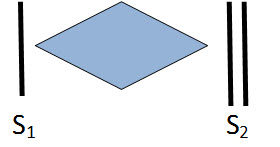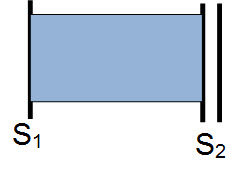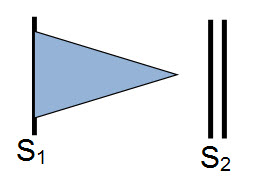Heart Murmurs
Murmurs are additional sounds generated by turbulent blood flow in the heart and blood vessels. Murmurs may be systolic, diastolic or continuous.
Systolic Murmur Grades based on the intensity of the murmur
- I/VI: Barely audible
- II/VI: Faint but easily audible
- III/VI: Loud murmur without a palpable thrill
- IV/VI: Loud murmur with a palpable thrill
- V/VI: Very loud murmur heard with stethoscope lightly on chest
- VI/VI: Very loud murmur that can be heard without a stethoscope
Systolic murmurs are the most common types of murmurs in children and based on their timing within systole, they are classified into:
a) Systolic ejection murmurs (SEM, crescendo-decrescendo) result from turbulent blood flow due to obstruction (actual or relative) across the semilunar valves, outflow tracts or arteries. The murmur is heard shortly after S1 (pulse). The intensity of the murmur increases as more blood flows across an obstruction and then decreases (crescendo-decrescendo or diamond shaped). Innocent murmurs are the most common cause of SEM (see below). Other causes include stenotic lesions (aortic and pulmonary stenosis, coarctation of the aorta, tetralogy of Fallot) or relative pulmonary stenosis due to increased flow from an ASD

Crescendo decrescendo murmur
b) Holosystolic (regurgitant) murmurs start at the beginning of S1 (pulse) and continue to S2. Examples: ventricular septal defect (VSD), mitral and tricuspid valve regurgitation.

Holosystolic mumur
c) Decrescendo systolic murmur is a subtype of holosystolic murmur that may be heard in patients with small VSDs. In the latter part of systole, the small VSD may close or become so small to not allow discernible flow through and the murmur is no longer audible.

Decrescendo murmur
Diastolic murmurs are usually abnormal, and may be early, mid or late diastolic.
More information: Examples of innocent murmu
- Early diastolic murmurs immediately follow S2. Examples: aortic and pulmonary regurgitation.
- Mid-diastolic murmurs (rumble) are due to increased flow (relative stenosis) through the mitral (VSD) or the tricuspid valves (ASD).
- Late diastolic murmurs are due to pathological narrowing of the AV valves. Example: rheumatic mitral stenosis. Tricuspid stenosis is very rare in children.
Continuous murmurs are heard during both systole and diastole. They occur when there is a constant shunt between a high and low pressure blood vessel. Examples: patent ductus arteriosus (PDA) and systemic arterio-venous fistulas. This may also occur in surgically placed shunts such as a BT shunt between the aorta and the pulmonary artery.
Innocent murmurs are common in children and have the following characteristics:
- Grade III or less in intensity
- An otherwise a normal cardiac examination and normal heart sounds
- No associated cardiac symptoms
- Change in intensity with body position (e.g. louder in supine position)
Summary of Heart Murmers
| Table showing the common heart murmurs audible at different age | |
|
Immediately after birth |
PDA or obstructive lesions* |
|
Shortly after birth (a few hours to few weeks) |
VSD, PDA, PPS (peripheral pulmonary stenosis) |
|
1-4 years |
Innocent murmurs, ASD |
|
Teenage |
Innocent murmur, HOCM or MVP/MR |
| *Obstructive lesions include AS, PS, Coarctation of the aorta, TOF, etc | |



